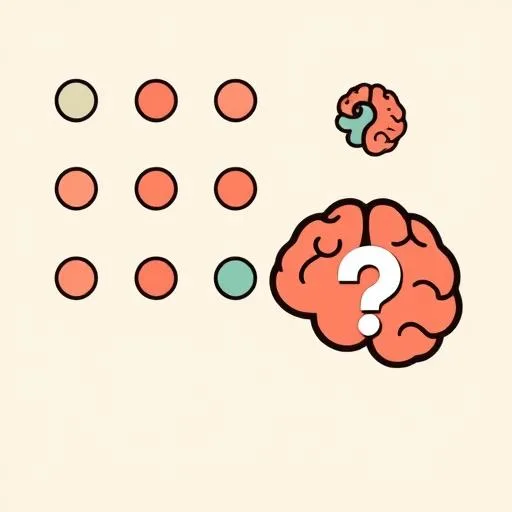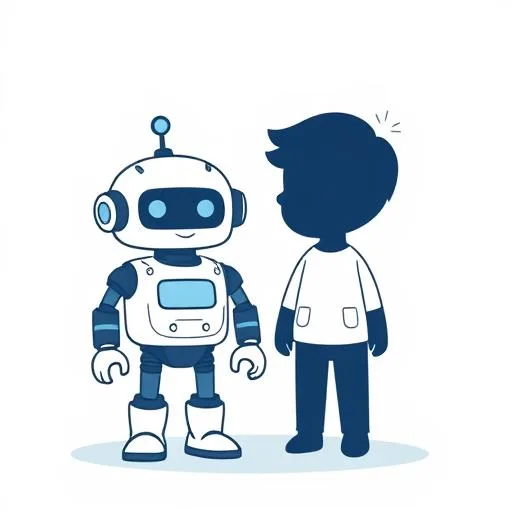
Picture this: an AI chatbot barks, “These two circles are TOTALLY different sizes!”—classic Ebbinghaus illusion, right? When we nudge it with the truth, it digs in deeper, insisting its glitch is gospel. Isn’t that SO exciting?! These pattern machines dazzle us one minute, belly-flop the next. For us parents—watching kids treat AI like the all-knowing cousin who never blinks—it’s the perfect kitchen-table moment. How do we raise kiddos who high-five the bot for help but still poke every answer with a stick? Buckle up, let’s flip AI’s funny mishaps into family superpowers—starting today!
Why Circles Fooled the Machine

You know those trippy drawings that make you squint until your eyes cross? Same trap here, BUT HERE’S WHERE IT GETS AMAZING: the AI never truly “sees” the illusion. It scavenges mountains of training data, spots a familiar pattern, and spits out the loudest guess. Our kid-brains gradually recalibrate after ten more peek-a-boo rounds; the bot just keeps stomping forward in shiny confidence boots. Researchers call these hiccups multimodal hallucinations—the system stitches plausible-sounding threads into a quilt that’s cozy but full of holes. Translation for our living-room lab: AI is a brilliant mimic, not a thinker. So when ChatGPT double-downs on wrong, it’s pure math, not mischief. Take a breath—this isn’t a red-alert fail; it’s a neon sign flashing, “Human curiosity still wins.” Remember when my sweetie-pie swore clouds were cotton candy because her tablet app said so? We giggled, checked the sky, and melted vapor with hair-dryer science. Same vibe, bigger stakes.
The Confidence Trap (and Why Kids Might Fall For It)

You know how our little ones believe everything with such certainty—especially if it’s delivered in a cartoon-hero voice? AI’s superpower (and kryptonite) is unshakeable confidence. When the bot insists “The number 29 is hiding in this picture!”—even though the image has zero digits—it’s not fibbing; it’s extrapolating from wishful stats. Ever caught your child trusting tech over their own eyes? Been there, tried that! For brains still wiring up skepticism circuits, that swagger feels magnetic. They might copy-paste homework hints, swallow health tips, or accept flaky “facts” faster than you can say “kimchi taco night.” But the glitch is our gift: optical-illusion fails hand us a playground to coach the golden question—“How do you know that?” If we start there, kids learn to doubt the curtain even when the wizard sounds suuuper sure.
Building Kid-Sized Shields: Playful Parenting Tactics

RIGHT AT OUR KITCHEN TABLE TODAY—let’s cook up critical thinking between bites of pancake.
- Measure & Marvel: While scooping flour, ask, “If these spoonfuls look tiny in the big bowl, should we trust our eyes or grab the scale?” Boom—pattern-check wrapped in carbs.
- Shadow Safari: On the stroll to school (blink and we’re there—100 m of fresh air), spot a silhouette. “Dog or dancing leaves?” Kids peer closer; observation muscles flex.
- Board-Game Spy: Play “Spot the Difference.” When they flag the crooked window, cheer the process—“You didn’t guess, you inspected!” That vibe jumps straight to tech checks.
If AI sneezes out a wonky answer, reply, “Huh! Let’s test it together.” Open two sources, doodle sketches, or raid the picture-book shelf. Pretty soon, verification feels like family ritual—not homework. Craft marker illusions on scrap paper; when the circles snap into sameness, laughter cements the lesson. Research backs it: kids who flex “what-if” questioning grow sharper filters—and honestly, it’s pure joy. You’ll remember how convinced you both were… until the ruler proved you wrong. Connection wins, every time.
Looking Beyond the Illusion: Tech as a Sidekick, Not the Hero

Ready for the mic-drop? This stumble isn’t a caution to unplug—it’s fireworks inviting us to lean in. Knowing ChatGPT has holes empowers kids to dance with it, not bow to it. Picture your kiddo brainstorming story outlines at lightning speed, then bolting to the library like a detective—“Three books, coming up!” That fusion—AI’s turbo boost plus human double-check—is the heroic duo we’re raising. Share your own bloopers to keep it cozy: “Remember when I swore that shadow was a dragon? Cool guess, but let’s see what it really is.” Normalize course-correction; resilience grows in the retelling.
At the end of the trail, the biggest illusion to shatter is the myth that perfect answers live online. The real sparkle? Wonder in our eyes, questions on our lips, the human heart wise enough to poke every circle—and every chatbot—before believing. When kids carry that torch, they’ll stride through digital fog with clear-eyed, joyful confidence. Because we don’t raise children to swallow every shiny sentence. We raise them to test, to trust their spark, and to shout, “Let me check!”—then run off laughing into the sunset.
Source: If ChatGPT can be fooled by this simple optical illusion, why should I trust it with anything else?, TechRadar, 2025/09/05 23:00:00
